Samsung Galaxy S21 Ultra, S21+ And S21 Make Brave Choices For 2021
Samsung's Galaxy S21 Ultra, Galaxy S21+ and Galaxy S21 are here, but 2021's flagship Android phones find the smartphone market – like the rest of the world – isn't what it once was. On the one hand, Samsung says, there are those who insist on a high-end device, won't compromise on features or design, and are willing to pay handsomely to get it.
On the other hand, though, some buyers are increasingly putting value first, and either aren't as willing, or able, to splash out on sky-high flagships. We saw that shift take its toll in 2020, hitting the Galaxy S20 and Note 20 families in the process. It's a new rift in the premium smartphone market, Samsung argues, and the Galaxy S21 family has had to split to go along with it.
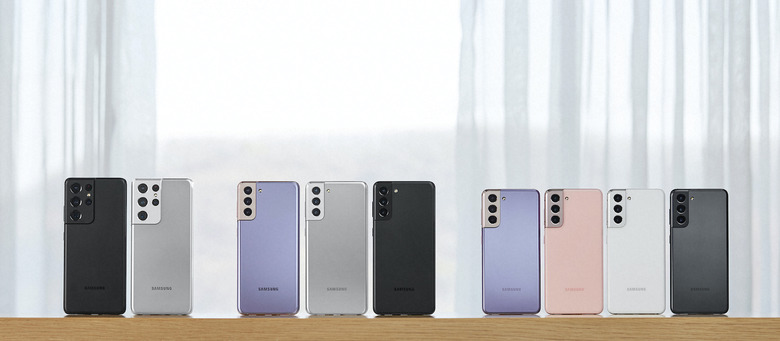
The result is a three-strong range again, but with a broader division between those devices. At the more affordable end there's the Galaxy S21 and Galaxy S21+, while at the uncompromising extreme is the Galaxy S21 Ultra. Plenty about them is the same, including Samsung's new design language and the fact that all three support 5G networks, but there are also some key differences.
All three get a new Single Take camera mode, for example, with 5x the AI processing so that it can analyze more of your video to pull out and curate the best images, clips, and animations. It can also now stitch moments together into a highlight reel for swifter sharing. Pulling out high-resolution stills from video is easier, too, with a new 8K Snap mode, and there's a Director's View which shows live thumbnails from each sensor allowing you to switch between them without interrupting video recording.
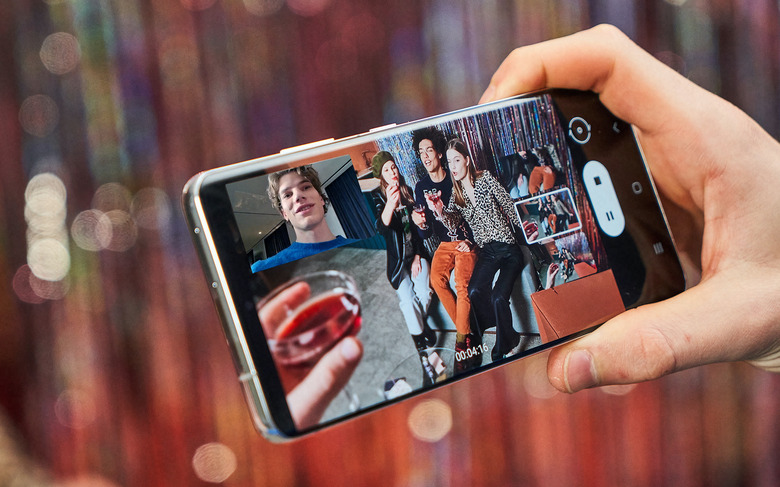
Super Steady Video Recording is supported again, as is a new Enhanced Portrait Mode which is now AI powered, Samsung says. That uses 3D analysis to distinguish between the subject and the background, for a cleaner, more natural differentiation.
Galaxy S21 Ultra is the 2021 flagship
Biggest and most powerful, the Galaxy S21 Ultra has a 6.8-inch Dynamic AMOLED 2X display running at Quad HD+ resolution. There's 120Hz refresh rate support too, and unlike on previous Samsung phones you don't need to choose between faster refresh and the maximum resolution: the Galaxy S21 Ultra supports both at the same time. It's an adaptive refresh rate as well, automatically adjusting between 10-120Hz depending on display and power demands, and it can crank up to 1,500 nits of brightness. A 1.7x larger in-display fingerprint sensor is built-in.
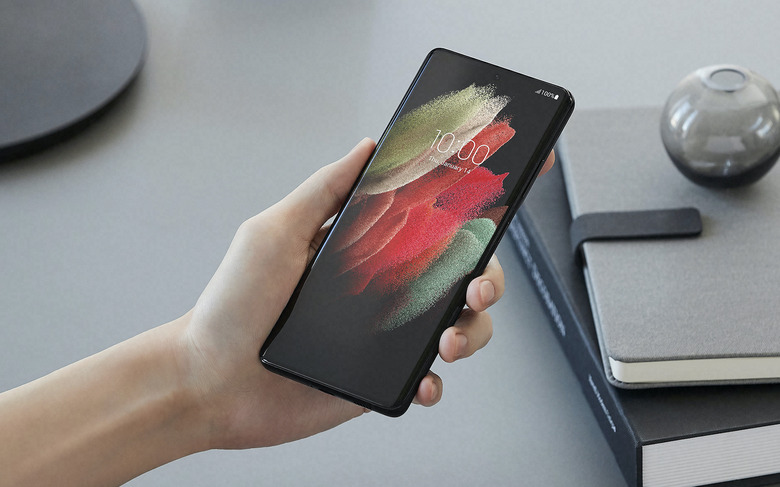
Samsung is calling its new phone aesthetic "Contour Cut Camera" with the camera bulge on the back now integrated into the metal frame. It's sandwiched in Gorilla Glass Victus – available in Phantom Black, Phantom Silver, Phantom Titanium, Phantom Navy, and Phantom Brown – and is IP68 water and dust resistant. There's a 5,000 mAh battery with 25W USB PD 3.0 (PPS) fast charging and 15W Fast Wireless Charging 3.0
Inside there's Qualcomm's Snapdragon 888, paired with either 12GB or 16GB of memory, and between 128GB and 512GB of storage. Gone, though, is the memory card slot: Samsung says cloud storage is now the go-to for most users, particularly when it comes to photos and videos.
It's something worth thinking about, certainly, when you consider the Galaxy S21 Ultra's cameras. There are four on the back, the headline being a 108-megapixel wide sensor with phase detection autofocus, OIS, and an f/1.8 lens. Normally, it uses nona binning to combine adjacent pixels for more detail, and produces a 12-megapixel final image with 12-bit HDR and a claimed 3+ times wider dynamic range.
Alongside it there's a 12-megapixel ultra-wide with Dual Pixel AF and a 120-degree f/2.2 lens, and not one but two telephoto lenses. Both are 10-megapixels with Dual Pixel AF and OIS: one offers an optical 3x zoom, the other an optical 10x zoom. Combining those, and the S21 Ultra's Laser AF, and some AI trickery, and Samsung says it gets a much-improved 100x Space Zoom, both clearer and easier to frame.
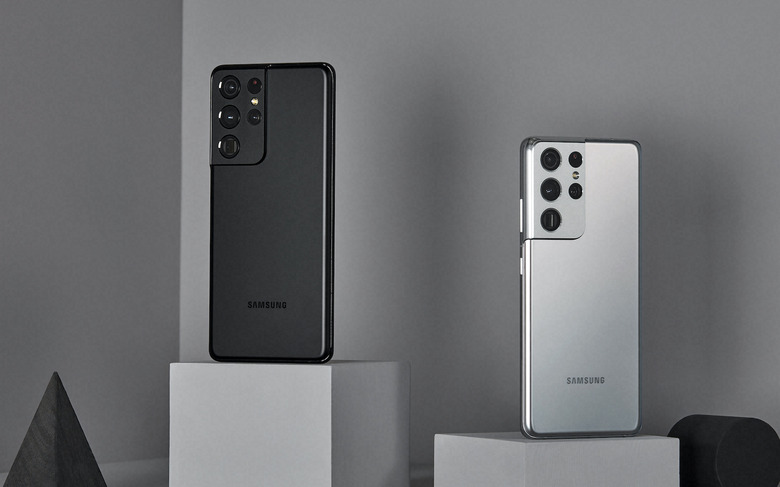
On the front there's a 40-megapixel selfie camera with Phase Detection AF and an 80-degree lens. All of the cameras can shoot 4K 60fps, and there's a 12-bit RAW file photo option in Samsung's Pro mode. A new Night Mode promises improved low-light shots, too, along with faster focus.
The other big change for 2021 is the addition of S Pen support. Once limited to the Galaxy Note series, now it's available on the Galaxy S21 Ultra too, though optionally rather than bundled. The existing S Pen you might have will work – for handwriting, initially, not any of the Bluetooth remote functionality from recent Note models – or Samsung will sell it separately, complete with a case that can store the stylus too.
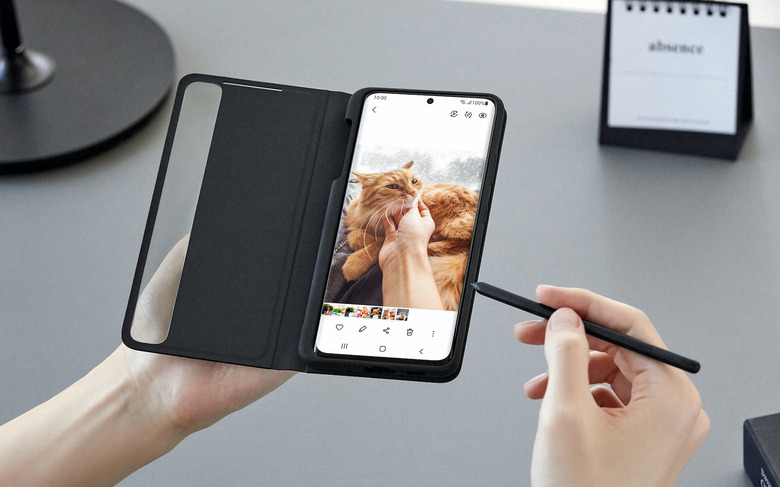
As for connectivity, there's WiFi 6E, Dual Bluetooth that supports multiple devices being paired simultaneously, and 5G with both Sub-6 GHz and mmWave support. An Ultra Wide Band (UWB) chip will support unlocking compatible car doors with the S21 Ultra, as well as the AR finder app to drop virtual messages for other Galaxy users. Down the line, there'll also be support for UWB on IoT devices like smart locks, together with more SmartThings integrations.
Galaxy S21 and Galaxy S21+ are more accessible
For those willing to compromise on some of the extravagances of the Galaxy S21 Ultra, the Galaxy S21 and S21+ promise a more attainable set of features. The S21 has a 6.2-inch display, the S21+ stepping up to 6.7-inches; both run at 2400 x 1080 resolution with HDR10+ support and an adaptive 120Hz refresh rate that automatically adjusts between 48-120Hz. The larger in-display fingerprint sensor is included, too.
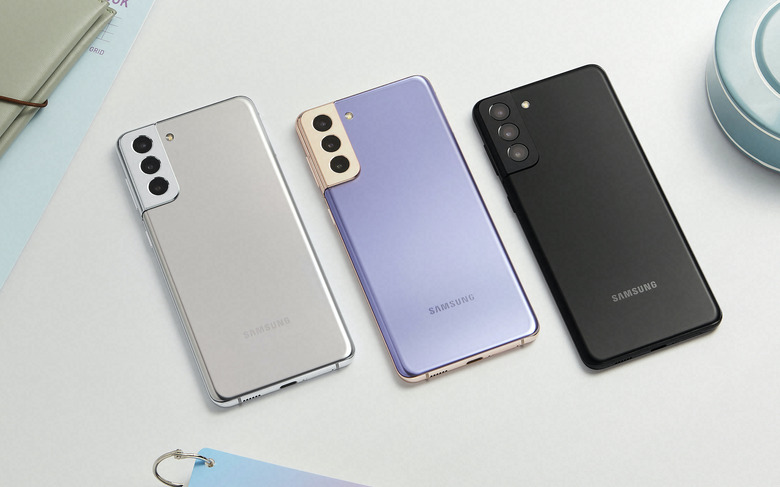
Inside, the US gets the Snapdragon 888, with 8GB of RAM and either 128GB or 256GB of storage; no microSD expansion, as with the Galaxy S21 Ultra. The S21 has a 4,000 mAh battery and the S21+ nudges that up to 4,800 mAh; both support the same fast wireless and wired charging, along with reverse wireless charging, as the S21 Ultra. Connectivity includes WiFi 6, Bluetooth, and 5G mmWave/Sub-6, though only the Galaxy S21+ has UWB.
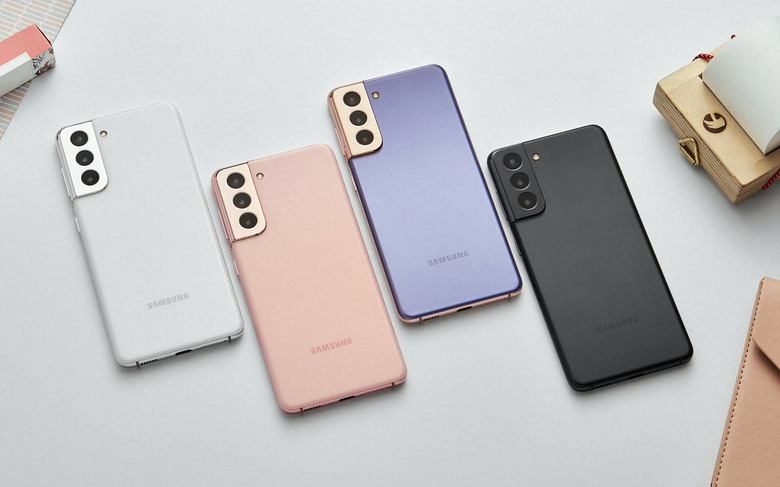
On the back, there's a triple camera system. The primary sensor is a 12-megapixel Dual Pixel AF with OIS and an f/1.8 lens. It's paired with a fixed-focus 12-megapixel 120-degree ultra-wide, and a 64-megapixel Phase Detection AF 3x optical zoom with OIS. Both phones have a 30X Space Zoom mode, combining optical and digital magnification. On the front, there's a 10-megapixel Dual Pixel AF 80-degree selfie camera.
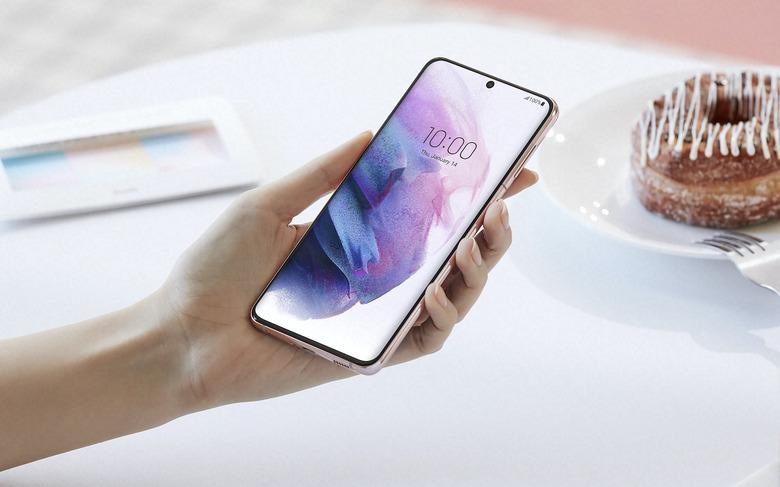
As for security, there's Samsung Knox Vault as you'd expect for hardware encryption, and a new Private Share feature. That basically acts like a cross between enterprise content management and Snapchat, with an app for Android P or later phones that allows you to choose how long recipients can keep accessing the files you send them.
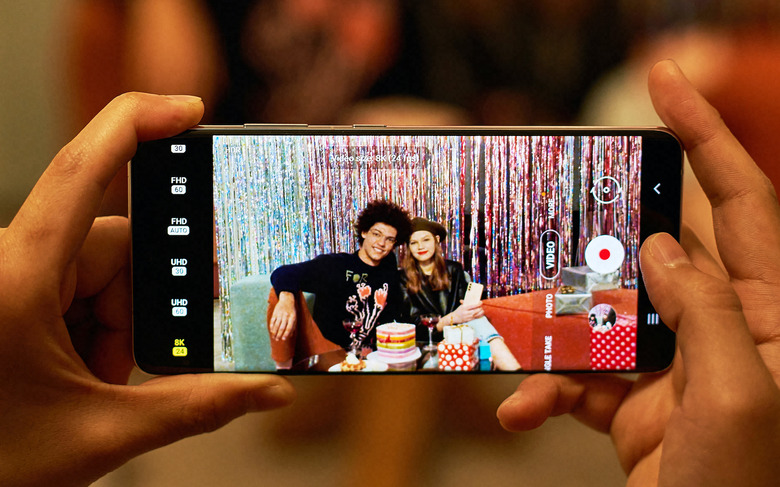
Like the Galaxy S21 Ultra, the Galaxy S21 and S21+ are IP68 water and dust resistant, and finished in matte glass. The Galaxy S21 will be offered in Phantom Violet, Phantom Gray, Phantom Pink, Phantom White, Phantom Gold, and Phantom Red. The Galaxy S21+ will be offered in Phantom Violet, Phantom Silver, Phantom Black, Phantom Gold, and Phantom Red.
Galaxy S21 Pricing and Availability
The Galaxy S21 and S21+ will go up for preorder from January 14, and will ship from January 29, 2021. The Galaxy S21 will start at $799.99, with 128GB of storage and 8GB of memory; the Galaxy S21+ will start at $999.99 for the 128GB version with 8GB of memory.
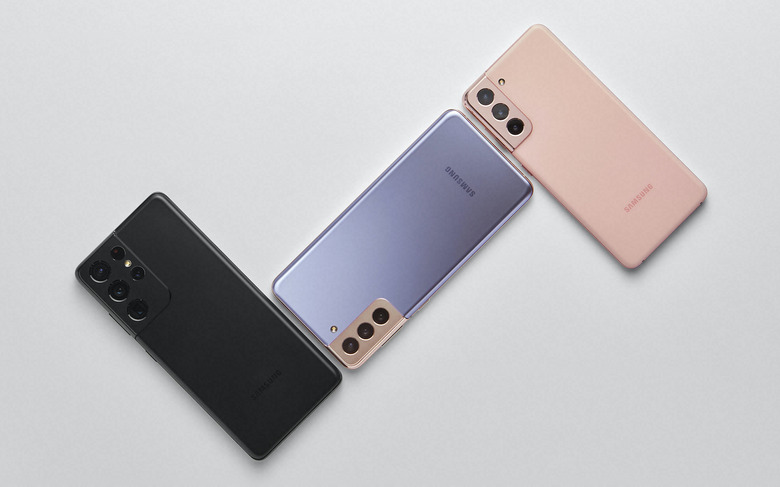
As for the Galaxy S21 Ultra, that will also be available on the same dates and across the usual carriers, as well as unlocked, in addition to directly from Samsung. Pricing kicks off at $1,199.99 for the 128GB version with 12GB of RAM.
Those who preorder will get Samsung store credit – $100 for S21 preorders, $150 for S21+, and $200 for S20 Ultra – along with a free Samsung Galaxy SmartTag. Extra Galaxy SmartTags will be priced at $29.99 each, or in bundle packs.
